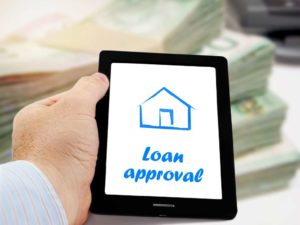 There’s no single best land loan out there for everyone, so it’s important buyers to shop around to find the best loan for their own situation.
There’s no single best land loan out there for everyone, so it’s important buyers to shop around to find the best loan for their own situation.
Developing a comprehensive land use plan, determines what type of loan is best and how long the repayment term should be.
Land loans aren’t as common as mortgage loans, so options may be limited.
Get the Lowest Interest Rate, Fees, and Fastest Service
YouTube – Straight Talk Lending – Daniel Dobbs
What are land loans?
Land loans are a type of loan used to buy a vacant lot to (eventually) build a home on or develop the raw land at a later date.
Because land is much harder to sell (than a home) land loans tend to be riskier for lenders than mortgage loans, since owners of raw land are more likely to default and walk away from the property in the event of a financial crisis.
That’s primarily because the demand for land is smaller than the demand for new and existing homes.
So, if a lender needs to foreclose on the land, there’s no guarantee it will get its money back in a timely manner, if at all.
As a result, lenders require a substantial down payment (30-50%), charge higher interest rates and the loans are typically adjustable-rate mortgages.
5 Types of Land Loans
There are five common types of land loans you can get to finance your land purchase, each with its own terms and features.
1) Lender Land Loans
Local financial institutions know the area and can better assess the value of the land and its potential, so community banks and credit unions are more likely to offer land loans than large national banks.;
Some lenders, however, may be willing to take a lower down payment and charge lower interest rates if you have plans to build on the land soon.
Also, local lenders are more likely to offer longer repayment terms, giving you more time to repay the debt.
2) USDA Rural Housing Site Loans
Building a primary residence in a rural area, the U.S. Department of Agriculture (USDA) has a couple of loans that can help.
Section 523 loans are designed for borrowers who plan to build their own homes, while Section 524 loans allow buyers to hire a contractor to build the home for you.
Both loans are designed for families with low to moderate-income and have a repayment term of just 2 years.
Interest rates, however, can be low. Section 523 loans, for instance, charge just 3%, while Section 524 loans charge the current market rate.
3) SBA 504 Loan
If you’re a business owner planning to use the land for a business, buyers may qualify for a 504 loan through the U.S. Small Business Administration (SBA).
With a 504 loan, the SBA and a lender help contribute to the costs of the land purchase:
-
The SBA provides a loan for 40% of the purchase cost.
-
A lender provides a loan for 50% of the purchase cost.
-
Buyers contribute 10 percent in the form of a downpayment.
